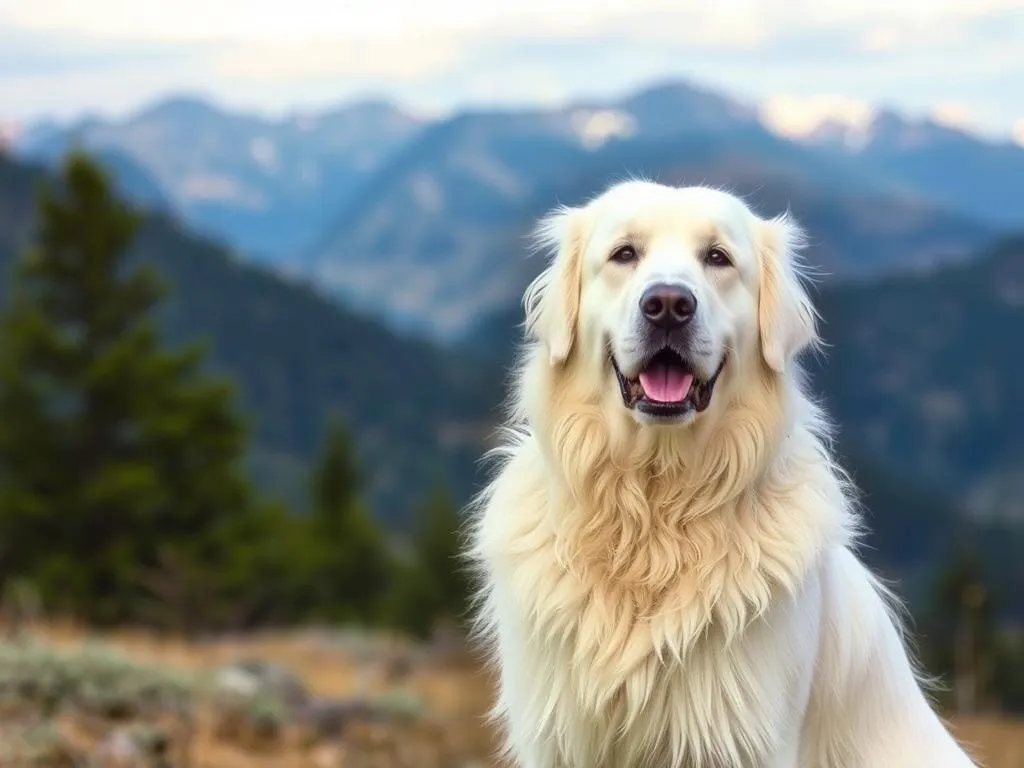
The Great Pyrenees breed is a majestic and noble dog known for its striking appearance and gentle temperament. Originating from the Pyrenees Mountains, this breed has a rich history as a livestock guardian, making it a beloved companion for families and farmers alike. Understanding the unique characteristics and needs of the Great Pyrenees is crucial for anyone considering adding one to their household. Here, we delve into a wealth of Great Pyrenees facts that will help potential owners make informed decisions.
History of the Great Pyrenees
Origin and Ancestry
The roots of the Great Pyrenees can be traced back over 3000 years to the mountainous regions of France and Spain. Originally bred by shepherds, these dogs were tasked with guarding flocks of sheep from predators like wolves and bears. Their imposing size, strength, and instinctive protective nature made them ideal guardians. The breed’s significance is encapsulated in their historical roles, not just as pets but as vital working dogs in rural communities.
Evolution of the Breed
As time progressed, the Great Pyrenees evolved both in appearance and temperament. Early breeding practices focused on enhancing their guarding abilities, resulting in a dog that is both gentle and fierce when necessary. Over the years, they have been selectively bred for their beautiful double coats, which provide insulation against cold weather, and their calm demeanor, making them great family pets. Today, they retain their herding instincts but have adapted well to domestic life.
Physical Characteristics
Size and Weight
The Great Pyrenees is a large breed, with males typically standing between 27 to 32 inches tall and weighing between 100 to 160 pounds. Females are slightly smaller, standing 25 to 29 inches tall and weighing 85 to 115 pounds. Their large size contributes to their impressive presence and makes them excellent protectors.
Coat and Color
One of the most distinctive features of the Great Pyrenees is its thick, double coat. The outer layer is long and water-resistant, while the undercoat is soft and fluffy, providing insulation. Common color variations include pure white, badger (a mix of gray and white), and even shades of tan. Their beautiful coat does require regular grooming to manage shedding, especially during seasonal changes.
Lifespan and Health
The average lifespan of a Great Pyrenees is around 10 to 12 years. While they are generally healthy dogs, they can be predisposed to certain health issues, including hip dysplasia, elbow dysplasia, and certain types of cancer. Regular veterinary check-ups and a healthy lifestyle can help mitigate these risks.
Temperament and Behavior
General Temperament
The Great Pyrenees is known for its gentle and affectionate nature. They are often described as calm, loyal, and protective of their families. While they may appear aloof with strangers, their instinct to protect makes them excellent watchdogs. Their overall temperament is a blend of independence and devotion, which can sometimes present challenges in training.
Socialization Needs
Early socialization is crucial for the Great Pyrenees. Exposing them to various environments, people, and animals during their formative months helps them develop into well-rounded adults. Positive reinforcement techniques work best, as these dogs respond well to rewards rather than harsh training methods.
Interaction with Children and Other Pets
Great Pyrenees are generally good with children and can be very protective of them. However, due to their large size, supervision during playtime is advisable to prevent accidental injury. They can also coexist with other pets, including cats and smaller dogs, especially if introduced properly at a young age. Their natural herding instinct may lead them to try to herd smaller animals, so training is essential.
Care and Maintenance
Grooming Requirements
The Great Pyrenees requires regular grooming due to its thick coat. Weekly brushing is recommended to minimize shedding and prevent matting. During shedding season, which typically occurs in spring and fall, more frequent grooming may be necessary. Bathing should be done as needed, and regular ear checks are important to maintain cleanliness and prevent infections.
Nutrition and Diet
A well-balanced diet is vital for the health of a Great Pyrenees. High-quality dog food that meets their nutritional needs is essential. Special dietary considerations include monitoring for obesity, as these dogs can be prone to weight gain. Consulting with a veterinarian about the best diet for your dog’s age, size, and activity level is advisable.
Exercise Needs
Despite their calm demeanor, Great Pyrenees still require regular exercise to maintain a healthy weight and mental stimulation. Daily walks, playtime, and opportunities to roam in a secure area are beneficial. Engaging them in activities such as herding or agility training can also provide both physical and mental exercise.
Training the Great Pyrenees
Basic Obedience Training
Training a Great Pyrenees in basic obedience is essential. Commands such as sit, stay, and come form the foundation of good behavior. Consistency and patience are key, as these dogs can be somewhat stubborn. Using positive reinforcement, such as treats and praise, will yield better results than punitive measures.
Advanced Training and Skills
While the Great Pyrenees is known for its independence, they can excel in advanced training and skills such as agility or herding. Their natural instincts make them suitable for these activities, and training can strengthen the bond between dog and owner. Engaging in these activities can also help channel their energy positively.
Handling Independence
Understanding the independent nature of the Great Pyrenees is crucial for effective training. They may not always be eager to please, as they often think for themselves. Setting clear boundaries and expectations, along with regular training sessions, will help manage this independence and promote good behavior.
Living with a Great Pyrenees
Ideal Living Environment
Great Pyrenees thrive in environments where they have space to roam. A home with a large, securely fenced yard is ideal, as these dogs enjoy being outdoors. They can adapt to various living situations but will do best in homes where they have access to outdoor space to exercise and explore.
Family Dynamics
This breed can fit into various family dynamics, whether single individuals, couples, or families with children. Their gentle nature and protective instincts make them excellent companions. However, families should be prepared for the commitment required to care for a large dog and ensure they receive enough attention and exercise.
Traveling with Your Great Pyrenees
Traveling with a Great Pyrenees requires some preparation. Ensure that your dog is comfortable in a vehicle, and consider using a harness or crate for safety. Take frequent breaks during long trips to allow your dog to stretch and relieve itself. Familiar items, like their bed or favorite toys, can help make your dog feel more at ease during travel.
Common Myths about Great Pyrenees
Debunking Misconceptions
There are several misconceptions about the Great Pyrenees that potential owners should be aware of. One common myth is that they are not suitable for homes with children. In reality, they can be wonderful family dogs when properly socialized. Another myth is that they do not need much exercise due to their calm demeanor; however, they require regular physical activity to stay healthy.
Understanding the Reality
Understanding the realities of owning a Great Pyrenees is essential for potential owners. They are not just beautiful dogs; they require commitment, training, and socialization. With proper care, they can make loving and loyal companions for many years.
Conclusion
The Great Pyrenees is a magnificent breed with a rich history and a gentle spirit. By understanding the unique characteristics and needs of this dog, potential owners can make informed decisions about bringing one into their home. Responsible ownership includes providing proper training, socialization, and care to ensure a happy and healthy life for both the dog and its family. For those captivated by the charm of the Great Pyrenees, embracing the journey of owning this breed can be incredibly rewarding.









